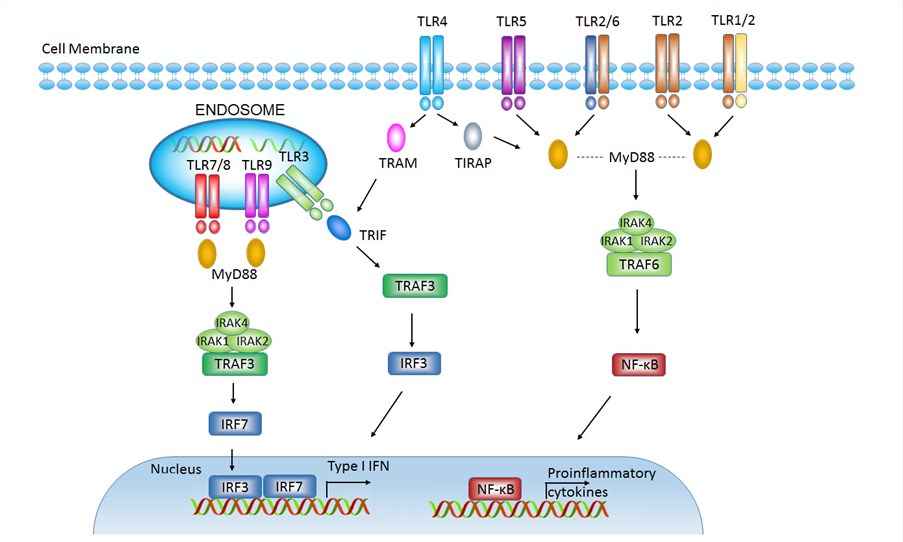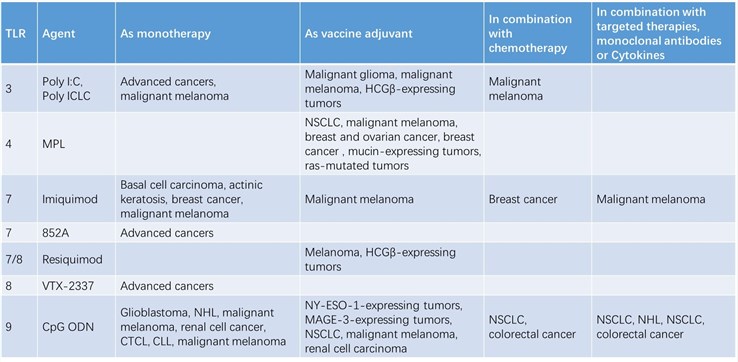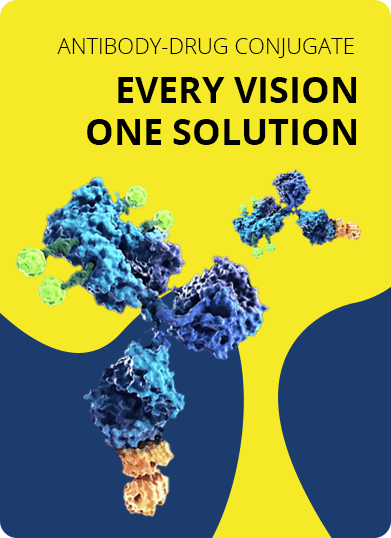- Home
- UTC Development
- Antibody-Immunostimulant Conjugate Development
- Antibody-TLR Agonist Conjugate Development
Antibody-TLR Agonist Conjugate Development Services
Toll-like receptors (TLRs) are pattern-recognition receptors related to the Drosophila Toll protein. TLR activation alerts the immune system to microbial products and initiates innate and adaptive immune responses. The naturally powerful immunostimulatory property of TLR agonists can be exploited for active immunotherapy against cancer. In view of the increasing availability of antibody-drug conjugates (ADCs), Creative Biolabs has further studied the feasibility of antibody-TLR agonist conjugates generation. Nowadays, equipped with perfect technology platform in antibody production and bioconjugation, Creative Biolabs is competent to provide antibody-TLR agonist conjugates development services for our global clients.
The Overview of TLR and TLR Agonist
TLRs belong to the TLR-IL-1 receptor (TIR) superfamily; they share an ectodomain composed of leucine-rich repeats for recognition of PAMPs and an intracytoplasmic TIR domain that mediates the recruitment of adapter molecules such as myeloid differentiation factor-88, TIR-associated protein, Toll receptor associated-activator of interferon and/or Toll-receptor-associated molecule (TRAM). While most TLRs are expressed on the cell surface, TLR3, 7, 8, and 9 are found within endosomes, where they are activated following capture and internalization of pathogens or their products. Some cell-surface TLRs are internalized after ligand binding; TLR2, for example, is recruited to macrophage phagosomes.
 Fig.1 TLRs and TLR-mediated signaling pathway.1,2
Fig.1 TLRs and TLR-mediated signaling pathway.1,2
TLR3, 4, 7/8, and 9 agonists represent promising cancer immunotherapeutics and have been included in the ranked National Cancer Institute's list of immunotherapeutic agents with the highest potential to treat cancer. They provide essential requirements for initiating T-cell immunity: antigen uptake, processing and presentation by DCs and other APCs, DC maturation, and T-cell activation. For example, TLR7/8 activation by imidazoquinolines can enhance antitumor effects through inhibition of angiogenesis, NK-mediated cytotoxicity, and direct apoptosis of tumor cells. Furthermore, local TLR7 activation by imiquimod has been shown to alter the tumor microenvironment and create an inflammatory environment suitable for antigen cross presentation and infiltration by effector T cells and DCs with cytotoxic potential.
 Fig.2 TLR agonists under clinical investigation for cancer therapy.1,2
Fig.2 TLR agonists under clinical investigation for cancer therapy.1,2
Antibody-TLR Agonist Conjugates Development Service
At Creative Biolabs, we can offer the following antibody-TLR agonist conjugates development services:
-
TLR3 Agonist Payloads
TLR3 is expressed on tissue and blood dendritic cells, monocytes, mast cells, NK cells, and epithelial cells. Polyribosinic-polyribocytidic acid (Poly I: C), is a synthetic dsRNA TLR3 agonists, which directly activates DC and also triggers NK cells to kill tumor cells. Other TLR3 agonists include polyadenosine-polyuridylic acid (Poly A: U) and polyinosinic-polycytidylic acid stabilized with poly-L-lysine and carboxymethylcellulose (Poly-ICLC). -
TLR4 Agonist Payloads
Bacterial (LPS) and its derivatives are commonly used vaccine adjuvants. Monophosphoryl lipid A (MPL) a detoxified component of LPS is derived from Salmonella Minnesota and contains the lipid A moiety that ligates TLR4. -
TLR7/8 Agonist Payloads
Imiquimod and resiquimod are imidazoquinolines, synthetic immune modulators that target TLR7 and TLR8, TLR that typically recognize viral ssRNA. They have the advantage of activating both mDC and pDC to stimulate innate and adaptive immune responses, while also activating NK cells. -
TLR9 Agonist Payloads
Several synthetic CpG oligodeoxynucleotide (ODN) agonists for TLR9 are currently in development for the treatment of cancer. CpG-ODNs have been classified into three families: D-, K or C-type ODNs. These differ based on their backbones, location, and number of CpG dinucleotides, and palindromic sequences. Other TLR9 agonists in clinical development for cancer include ISS 1018, IMO-2055, and CpG-28.
Creative Biolabs' antibody development and bioconjugation team has successfully prepared multiple ADCs and is led by experienced industry professionals with demonstrated expertise in bioconjugations. We offer novel antibody-TLR agonist conjugates for your specific requirements. If you are interested in our services, please contact us for more details.
References
- Li, Kai, et al. "Promising targets for cancer immunotherapy: TLRs, RLRs, and STING-mediated innate immune pathways." International journal of molecular sciences 18.2 (2017): 404.
- Distributed under Open Access License CC BY 4.0, without modification.
For Research Use Only. NOT FOR CLINICAL USE.

Online Inquiry
Welcome! For price inquiries, please feel free to contact us through the form on the left side. We will get back to you as soon as possible.
